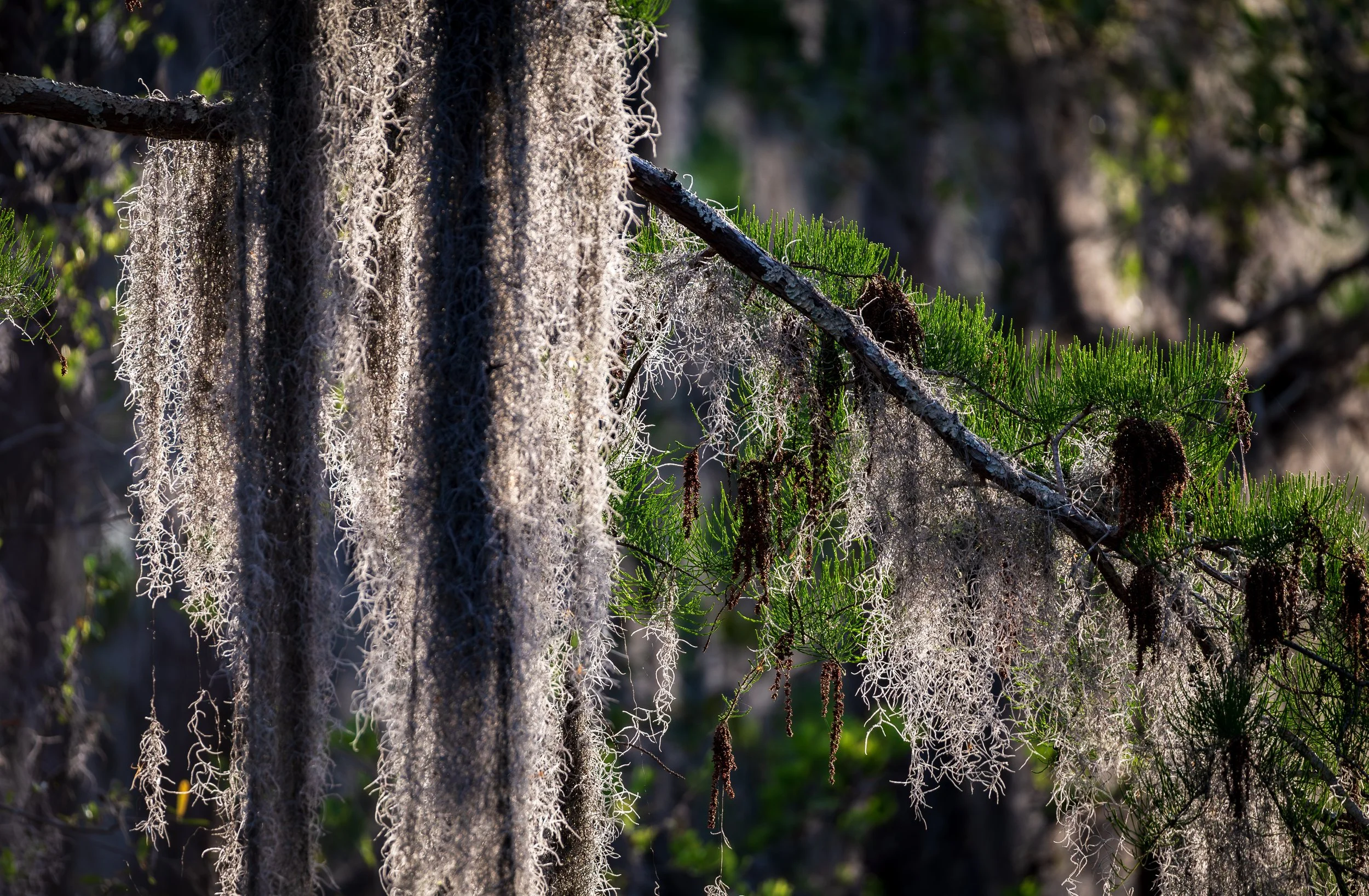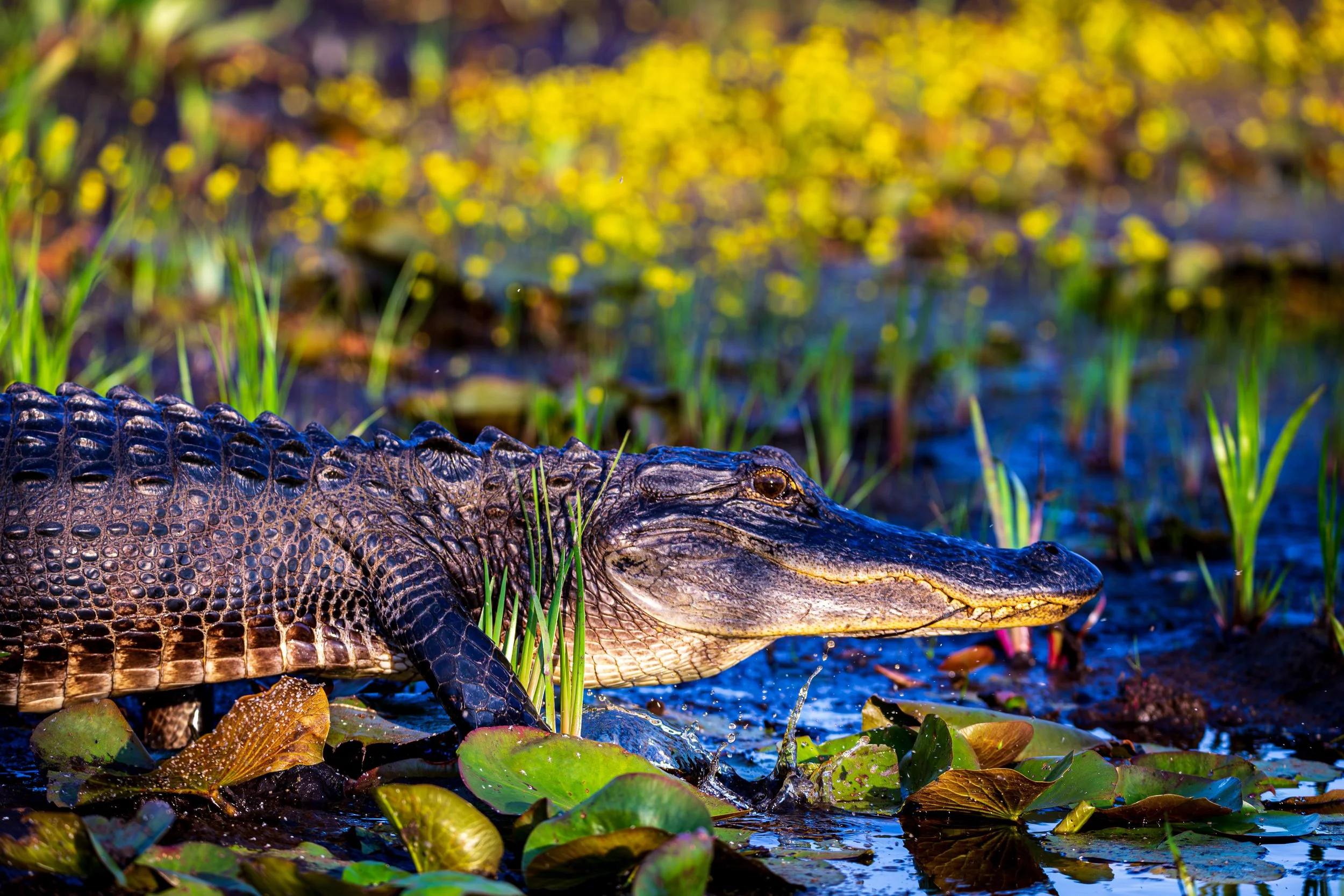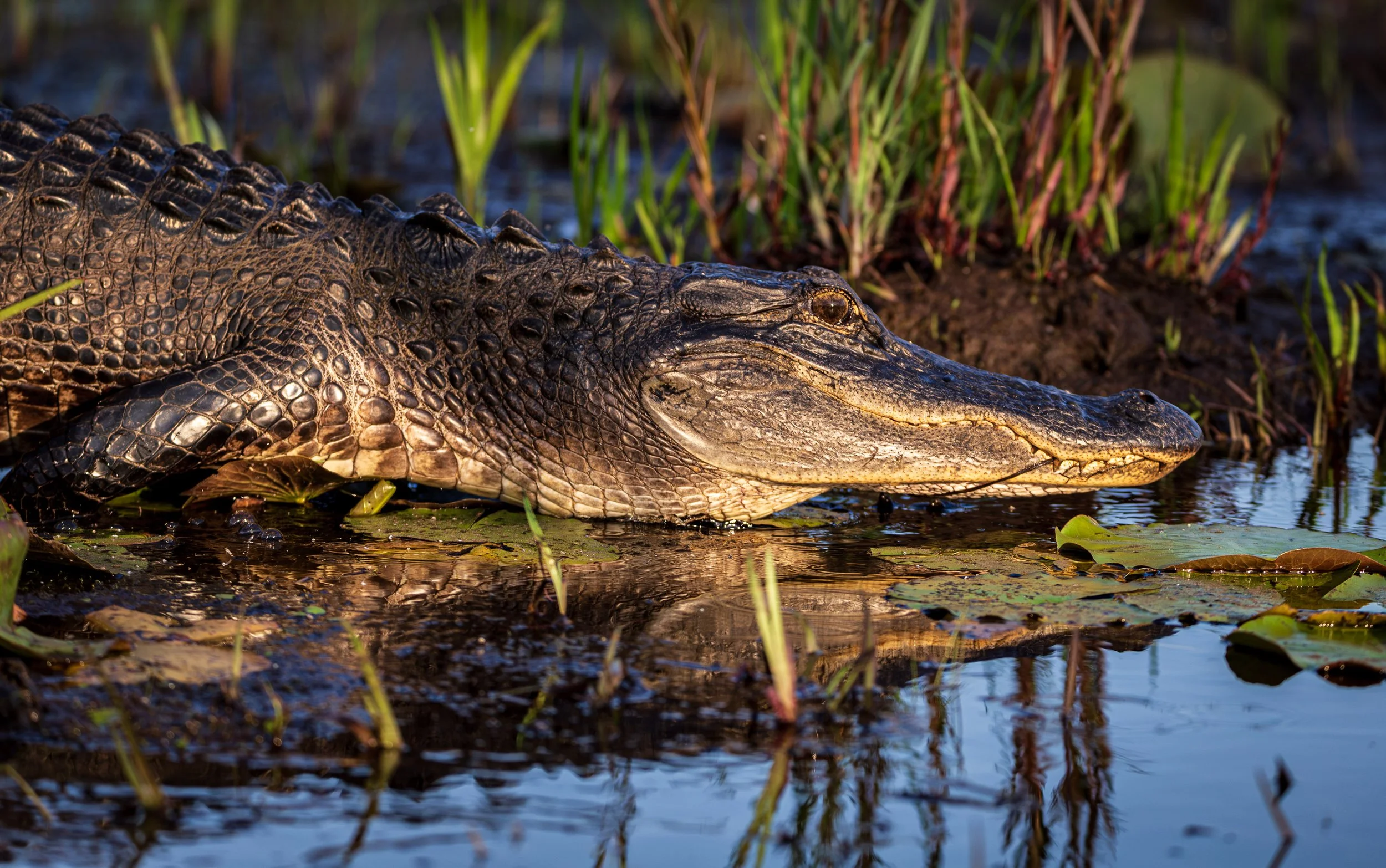A Day In The Swamp
(CONTENT WARNING: post contains alligators and the potential for young children getting eaten)
My first trip to the Okefenokee was a solo affair. It was supposed to be a photo workshop, but that got canceled due to a lack of other participants. I went anyway. I left Atlanta late in the morning to dodge traffic, grabbed lunch at Buc-ee’s, and rolled into Waycross by mid-afternoon. That gave me plenty of time to set up my gear—not that everything wasn’t already fully charged before I left the house. This would be the first field test for my new lens: the Sigma 150-600mm Contemporary. A country fried steak dinner at Cracker Barrel felt like the right kind of fuel for a pre-dawn swamp-bound adventure.
I’d barely parked at the Folkston entrance when I noticed them—three big, black flies already posted up on my side mirror. Not the annoying but meek kind that buzz around trash cans. These were thin, angry, and full of swamp-born hubris—like they'd already logged my blood into their calorie-counting app.
At this hour—just past sunrise—it was just me and the fisherfolk. I headed down the charmingly named Swamp Island Drive to check out the Chesser Homestead and the Observation Tower. Having never been here before, I didn’t know what to expect. I pictured gators casually blocking the road and snacking on unattended children.
(SPOILER: I saw no young children eaten)
I spotted a young deer and a small turkey on Swamp Island Drive just as I reached the Homestead parking area. After dousing myself in 40% DEET, I headed down the short trail to the homestead. But since I was really here to see gators—and the black flies, swarming like they meant it, even if they weren’t biting yet—I gave the homestead only a cursory loop before heading back to the car. It’s hard to say I was disappointed, but as a solo traveler hunting birds and beasts with a camera, I didn’t exactly give it a fair shake.
The Dark Tower
(Well, the observation tower—with all the vibes of a Stephen King novel.)
I set off toward the observation tower. Despite it being at least an hour past sunrise, I still hadn’t seen a single soul on Swamp Island Drive or any of the trails or parking lots—just the fisherfolk way back at the entrance. The silence added to the atmosphere. This was my first real foray into the swamp, and I was alone.
The boardwalk floated above dark water and tangled vegetation. The solid, tree-dense ground gave way to open marsh, birds calling from every direction. I caught glimpses of a few common species, but nothing too exciting—except, finally, my first decent shot of a cardinal. (About time.)
The solitude was doing a number on my imagination.
Can gators climb boardwalks? What about bears? I bet snakes can.
These are the kinds of thoughts that start rattling around when you’re over-caffeinated and under-experienced in a place like this.
And then I saw it: a pile of stool on the boardwalk.
Too small for a gator… too dry for a bear… too structured for a bird, unless it was a very large bird with something to prove.
A rogue swamp python?
More droppings appeared at intervals down the path. Was I walking into some kind of carefully arranged ambush?
Where was everyone?
The swamp was still and echoing, each splash or rustle sharpened by my solitude.
Too much caffeine and too little sleep let my imagination roam free. The sounds around me became... suggestive. Like the place was alive in a way it wasn’t ready to explain.
Even the birds—majestic as they were—looked vaguely prehistoric. Watching that egret rise out of the mist, I found myself thinking more pterodactyl than postcard.
The boardwalk curved over still water—prime gator territory, or so I’d been led to believe. I kept scanning for them. After a while, I started imagining shapes in the water… Was that a log? A trick of the light? The swamp doesn’t tell you when you're being watched—it just lets you wonder.
(Spoiler: I didn’t see any gators. Not yet.)
Except for my increasingly unhinged inner monologue, it was a beautiful walk. When the tower finally came into view, I made sure to climb it loudly—just in case any gators or bears had taken up residence overnight. (Where was everybody?)
The view from the top was still, broad, and entirely gator-free—at least visibly. No monsters, no mysterious figures, just a quiet sweep of cypress and sky. A perfect place for a few landscape shots.
I climbed down and quickened my pace. The 10 a.m. boat tour back at the main entrance wasn’t going to wait.
Swamp Boat Tour
I ended up taking three boat tours over the day—10 a.m., 2 p.m., and the sunset cruise. The first two were lightly populated, and I pretty much had my pick of seats. The sunset tour was packed, but I posted up in the front left—I mean, port—seat.
Any lingering worries about not seeing gators vanished pretty quickly. Pairs of eyes began surfacing across the canal, raising that age-old philosophical question:
“Why did the gator cross the water?”
The answer remained elusive.
Our guide, Nick, casually mentioned that gators are known to bait birds by balancing sticks on their snouts—waiting for something curious (or careless) to come close. He said he’d just seen one try the same trick with a small child, but the parents noticed in time.
(He delivered this story with the calm authority of someone who’s seen it all—and wouldn’t be shocked if the gator had a TikTok account.)
Nick, had been keeping tabs on several hawk nests in the cypress trees lining the canal. Each nest held a different stage of hawk childhood—fluffy down-covered youngsters, brooding adolescents, and what Nick casually referred to as “eyes.” (Apparently, yes, baby hawks are called “eyes.” Make of that what you will.)
I’m not saying Nick is a Swamp Druid—but right after he said, “If we’re lucky, we might see the momma hawk bring a snake for the babies to eat,” there she was. Boom. Momma hawk. With snake.
I managed to get a few shots with the snake dramatically dangling from her talons, but no luck capturing the moment the eyes tucked in for breakfast.
Spanish moss and cypress trees do a lot of heavy lifting when it comes to swamp atmosphere—second only to the gators, honestly. Draped in sunlight or shadow, the moss turns every scene into something still, something ancient, and something just a little bit haunted. Especially when the light hits just right, backlighting the strands like fine threads of silver decay.
I know it looks like he’s smiling, but we definitely interrupted his sunbathing session. He turned fast—surprisingly fast—and gave us a long, deliberate side-eye as he walked into the water without breaking eye contact. You could almost see the mental math: Threat? Tourist? Lunch?
He slowed just enough to give the impression of consideration, like he was sizing up the boat and wondering if we were organic, gluten-free, and worth the effort.
Once we left the canal behind, we entered the real swamp—wide, still water dotted with lily pads, frogs calling from somewhere just out of sight, and strange patches of floating plant life drifting between the bog islands. The lilies had already closed for the evening, giving the water an almost meditative symmetry.
Nick explained the swamp’s slow-burning life cycle: from peat buildup and decomposition to the massive fires sparked by lightning when everything dries out. Having driven through a large Everglades fire on the way down to the Keys last month, it was oddly comforting to learn that these fires are a natural, even necessary, part of the swamp’s renewal.
“Log or Gator?” is the swamp’s answer to “Gunshot or Fireworks?”—and honestly, a lot more fun. Like in scuba diving, ambush predators make a living by being nearly invisible until it’s far too late.
There’s nothing quite like watching what you thought was a log suddenly launch into the brush on four stubby legs with a tail-powered swish. Gets the heart going, even when you're safely in a boat.
The natural beauty of the swamp is undeniable. While the openness of the Suwanee Canal is entirely man-made—part of a doomed 19th-century effort by “capitalists and former Confederate officers” to drain the swamp, harvest its timber, and transform the area into a modern mixed-use development—the result is, ironically, one of the most picturesque ways to enter the Okefenokee.
(Drain the swamp? It’s been tried. Spoiler: the swamp won.)
Herons. One great blue. One little blue.
Both in near-identical poses, perfectly framed, gazing across the water like long-legged mirror images of each other.
If you squint—and ignore centuries of evolutionary divergence—you might even see a heart shape in their symmetry. I won’t speculate on inter-species love, but I will say: the swamp accepts all kinds of connections.
While the gators offer plenty of classic swamp drama, don’t overlook their smaller, winged cousins—the dragons.
(Dragonflies, technically. But once you’ve seen them strike a pose like this, you’ll understand the name.)
Prehistoric? Check. Fierce? At their scale, absolutely.
And unlike gators, they actually hold still long enough for a portrait.
My one-day trip into the Okefenokee was more than worth it—and not nearly enough. I’m already planning a return with a kayak in tow, hoping to get even closer to the gators, the soft-shelled turtles, and whatever else the swamp chooses to reveal.
There’s still more to see.
More to hear.
More to wonder about in the silence between ripples.


























